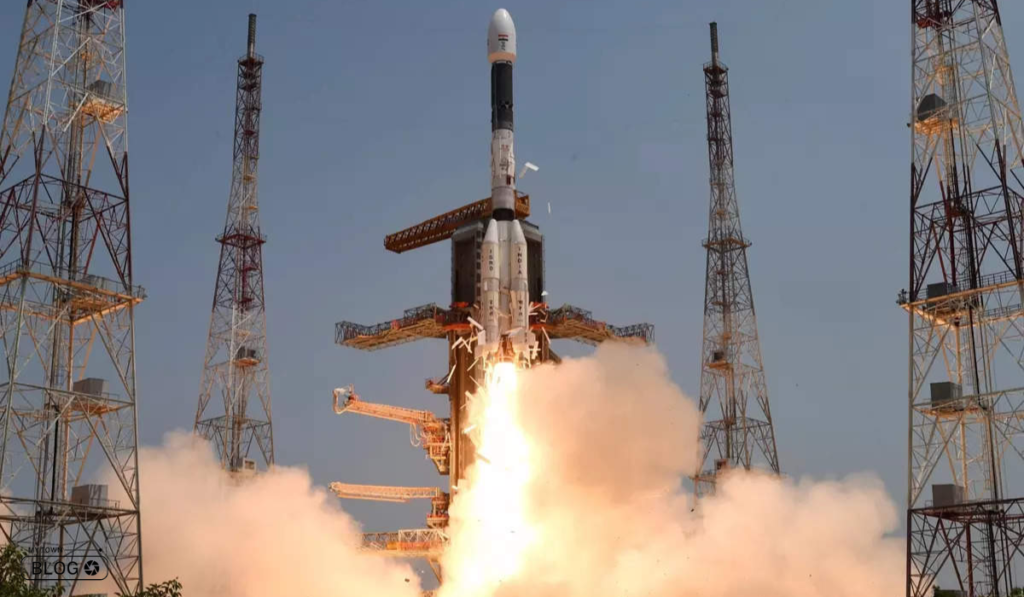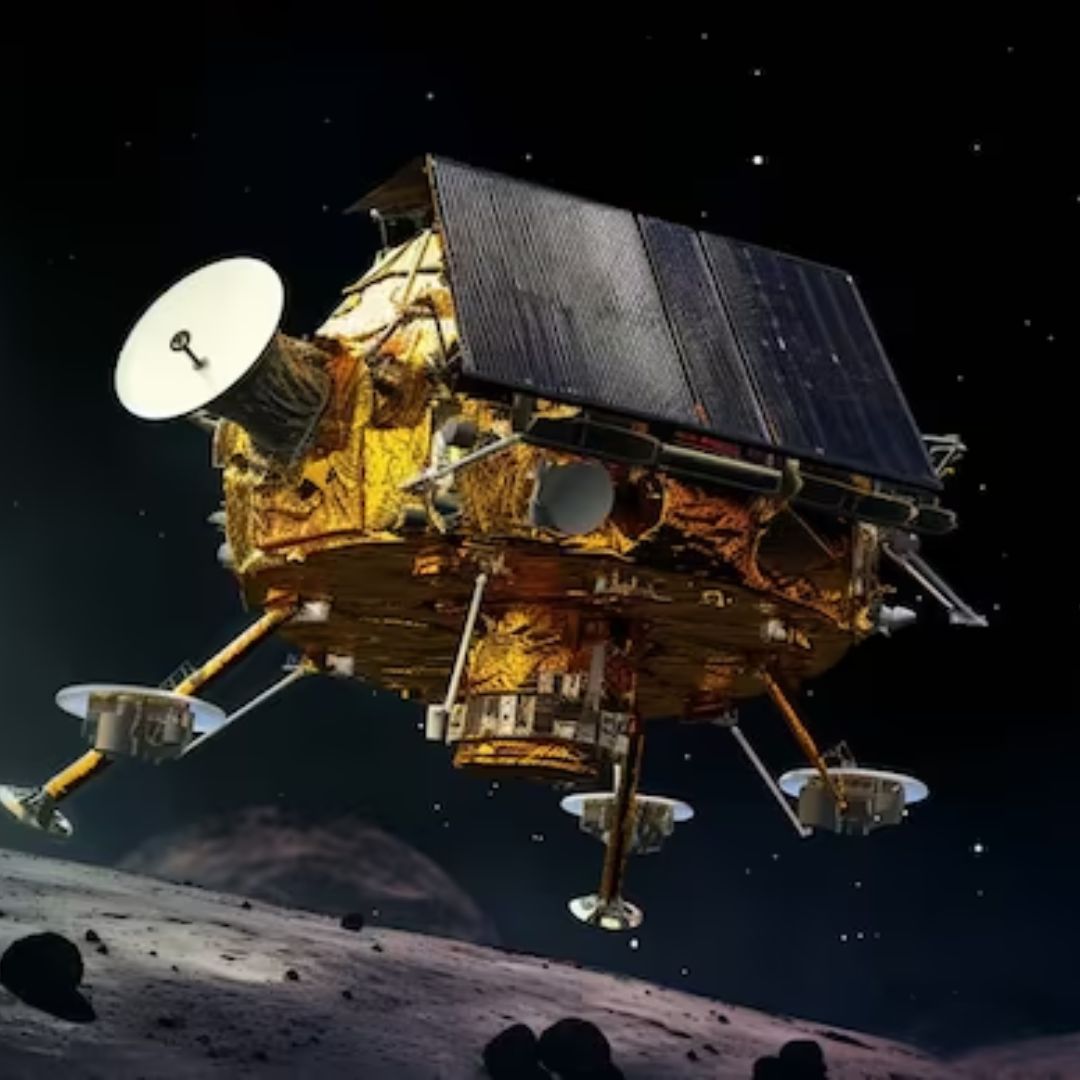Chandrayaan 3 is an ISRO (Indian Space Research Organization) mission with the primary objective of putting a lander & rover in the highlands near the south pole of the Moon in the August 2023 timeframe and demonstrating end-to-end landing and roving capabilities. It will also make several scientific measurements on the surface and from orbit. It comprises a lander/rover and a propulsion module. The lander/rover will be similar to the Vikram rover on Chandrayaan 2, with improvements to help ensure a safe landing. It will be carried to lunar orbit by the propulsion module, which will remain in orbit around the Moon and act as a communications relay satellite. The rover will move a seismometer, heat flow trial & spectrometers.

Spacecraft and Subsystems:
- The propulsion module of Chandrayaan-3 features a box-like structure with a large solar panel mounted on one side and an Intermodule Adapter Cone (a cylinder) on top, serving as a mounting structure for the lander. It weighs approximately 2148 kg and generates 758 W of power. The module has a main thruster nozzle at the bottom for propulsion.
- The box-shaped lander includes four landing legs and four landing thrusters. With a mass of 1752 kg (including the 26 kg rover), it generates 738 W of power using side-mounted solar panels. The lander incorporates various sensors to ensure a safe landing, including an accelerometer, altimeters (Ka-band and laser), Doppler velocimeter, star sensors, inclinometer, touchdown sensor, and a suite of hazard avoidance cameras.
- The spacecraft uses reaction wheels for attitude control, and it utilizes a bipropellant system (MMH and MON3) with four 800 N throttleable engines and eight 58 N throttleable engines for propulsion.
- An X-band antenna facilitates communications. The lander houses the rover in a compartment with a ramp for deployment onto the lunar surface.
- They designed the rover as a rectangular chassis mounted on a six-wheel rocker-bogie wheel drive assembly. It incorporates navigation cameras and a solar panel capable of generating 50 W of power. The rover establishes direct communication with the lander through Rx/Tx antennas.
As for the scientific instruments, the lander carries several notable ones. These include Chandra’s Surface Thermophysical Experiment (ChaSTE) for measuring surface thermal properties. The Instrument for Lunar Seismic Activity (ILSA) for monitoring lunar seismicity, and the Radio Anatomy of Moon Bound Hypersensitive ionosphere and Atmosphere (RAMBHA) for studying the gas and plasma environment.
Mission Profile
The Chandrayaan-3 mission will launch on July 13, 2023, at 9:00 UT (2:30 p.m. India standard time). The launch will use a GSLV Mark 3 heavy-lift vehicle from the Satish Dhawan Space Center in Sriharikota, India. There is a possibility of a launch window extending until July 19.
Once launched, they will insert Chandrayaan-3 into an elliptical parking orbit with approximately 170 x 36,500 km dimensions. The propulsion module will then maneuver the lander/rover into a circular polar lunar orbit at 100 km. Subsequently. The lander will separate from the propulsion module and proceed to touchdown in the south-polar region of the Moon, near coordinates 69.37 S and 32.35 E.
During landing, the planned velocities are less than two m/s vertically and 0.5 m/s horizontally to ensure a controlled descent. The lander and rover will be designed to operate for one lunar daylight period, which is roughly equivalent to 14 Earth days. The propulsion module, acting as a communications relay satellite, will remain in lunar orbit to facilitate communications between the lander/rover and Earth. Chandrayaan-2 will also serve as a backup relay for communication purposes.
Conclusion
The Chandrayaan-3 mission by the Indian Space Research Organization (ISRO) is a significant endeavor to demonstrate. The capabilities of landing and roving on the lunar surface near the Moon’s south pole. With a scheduled launch in July 2023, the mission will utilize a GSLV Mark 3 launch vehicle to propel the spacecraft into an elliptical parking orbit.
FAQs
What is the purpose of the Chandrayaan-3 mission?
The primary objective of Chandrayaan-3 is to demonstrate the capability of landing and roving on the lunar surface near the Moon’s south pole. It also aims to conduct scientific measurements and experiments on the Moon’s surface and from lunar orbit.
Which launch vehicle will Chandrayaan-3 use?
The Indian Space Research Organization (ISRO) will initiate the mission utilizing a GSLV Mark 3 heavy-lift initiate vehicle from the Satish Dhawan Space Center in Sriharikota, India.
How long is the expected operational duration for the lander and rover?
The lander and rover are designed to operate for one lunar daylight period, equivalent to approximately 14 Earth days.
Will there be backup communication capabilities for Chandrayaan-3?
In addition to the propulsion module acting as a communications relay, Chandrayaan-2 will also serve as a backup relay for communication purposes.








